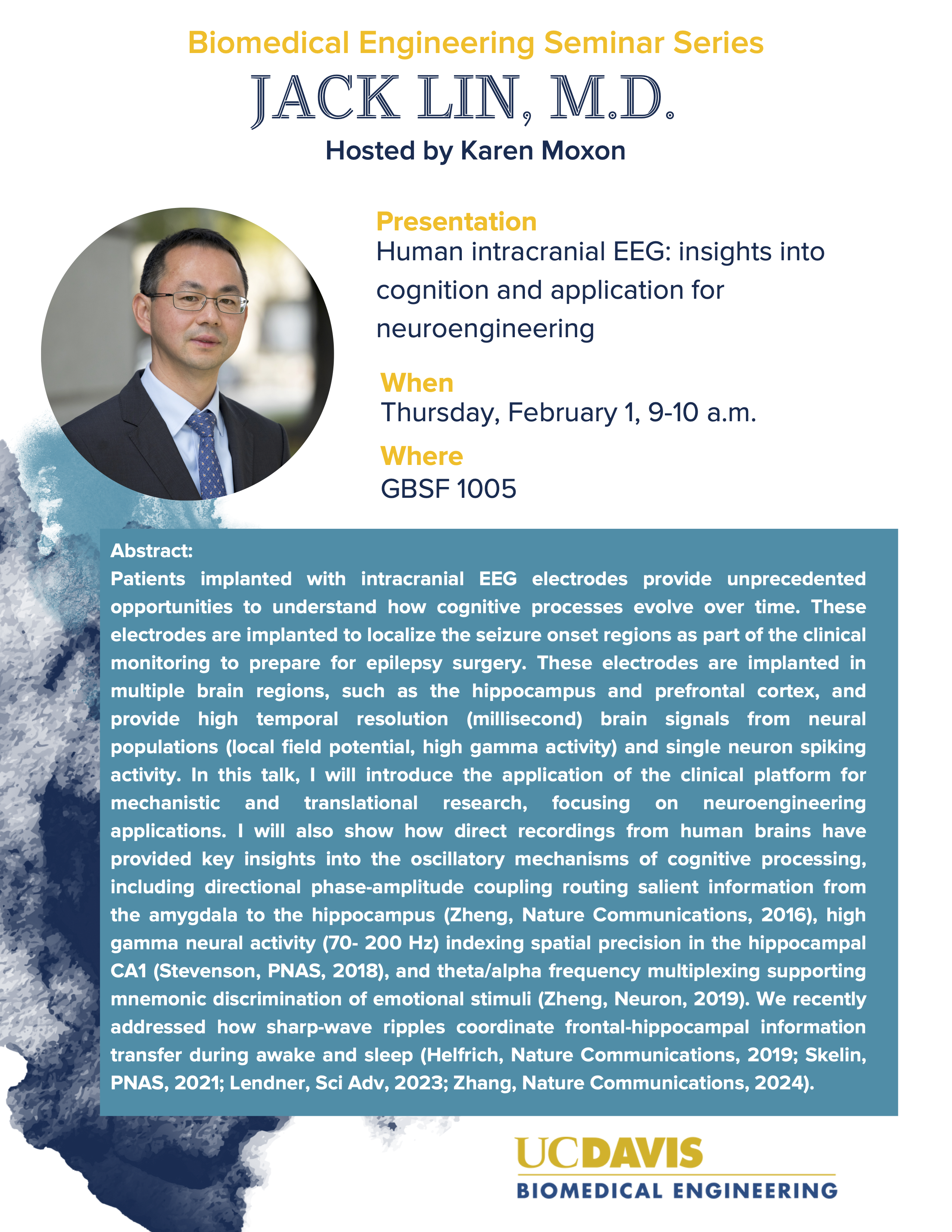
Event Date
Jack Lin, M.D., Department of Neurology, UC Davis
Abstract
Patients implanted with intracranial EEG electrodes provide unprecedented opportunities to understand how cognitive processes evolve over time. These electrodes are implanted to localize the seizure onset regions as part of the clinical monitoring to prepare for epilepsy surgery. These electrodes are implanted in multiple brain regions, such as the hippocampus and prefrontal cortex, and provide high temporal resolution (millisecond) brain signals from neural populations (local field potential, high gamma activity) and single neuron spiking activity. In this talk, I will introduce the application of the clinical platform for mechanistic and translational research, focusing on neuroengineering applications. I will also show how direct recordings from human brains have provided key insights into the oscillatory mechanisms of cognitive processing, including directional phase-amplitude coupling routing salient information from the amygdala to the hippocampus (Zheng, Nature Communications, 2016), high gamma neural activity (70- 200 Hz) indexing spatial precision in the hippocampal CA1 (Stevenson, PNAS, 2018), and theta/alpha frequency multiplexing supporting mnemonic discrimination of emotional stimuli (Zheng, Neuron, 2019). We recently addressed how sharp-wave ripples coordinate frontal-hippocampal information transfer during awake and sleep (Helfrich, Nature Communications, 2019; Skelin, PNAS, 2021; Lendner, Sci Adv, 2023; Zhang, Nature Communications, 2024).

